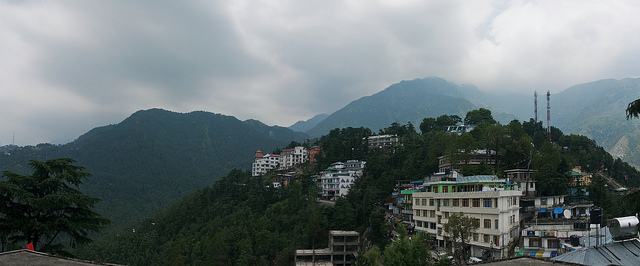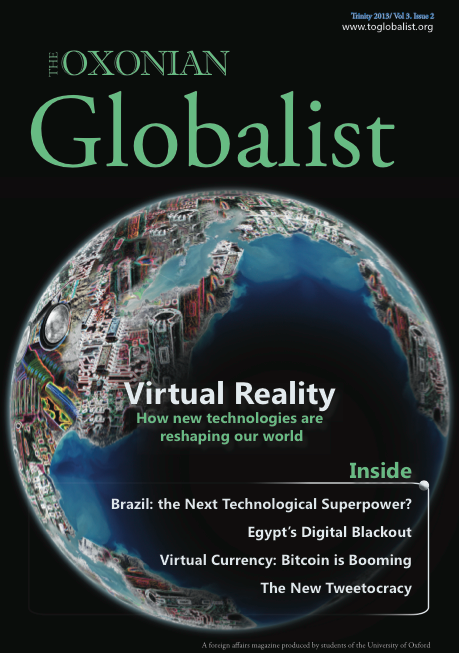McLeod Ganj is a small city in northern India. Images of self-immolated monks are plastered on the walls of houses and restaurants. I overhear stories in local cafes of cousins, siblings and parents who have been persecuted by the occupying power. The words ‘Free Tibet’ – the slogan of the Tibetan independence movement – protrude defiantly from T-shirts, hats and bags. Unlike in the West, where ethical movements are often reappropriated for the purposes of commercial gain, such garments represent a very sincere declaration of allegiance. Today, such images, slogans and symbols are readily available digitally, and can reach international audiences effortlessly. Yet the internet age presents fresh challenges to the Free Tibet movement. I lived in McLeod Ganj for three months this summer; for its Tibetan population, the city is an indefinite place of exile.

McLeod Ganj is an indefinite place of exile for its Tibetan inhabitants. Courtesy of lukexmartin (flickr).
In 1950, the Chinese People’s Liberation Army invaded Tibetan territory, destroying nearly every Tibetan monastery, torturing or imprisoning thousands of Buddhist monks and nuns. Mao proceeded to launch a campaign meant to steadily erode Tibetan language and culture. Tibet’s spiritual leader, the Dalai Lama, fled his native country in 1959 after a separatist uprising in the capital, Lhasa, spread to infect the rest of the nation. All attempts at negotiation between the Chinese Communist Party (CCP) and the Dalai Lama have been fraught ever since, although His Holiness does not specifically advocate Tibetan independence, preferring to seek a state of relative autonomy from China.
Stories of fresh injustices and persecution emerge daily, but these have not much changed in character from the 1950s. The targeting of cultural festivities and religious leaders defined the conflict half a century ago just as much as it does today. This year, 3 men were arrested for the stabbing of a Tibetan monks and a British citizen in Chengdu province. In July, Chinese police opened fire on a group of unarmed Tibetan protestors celebrating the Dalai Lama’s birthday, an event normally prohibited by the Chinese authorities, who remain fearful of his sway over the Tibetan population. However, the most recent attack on Tibet’s independence movement came in early August, when the Tibetan government in exile was the victim of a vicious wave of cyber attacks. The Chinese-language website of the Central Tibetan Administration, exiled in India since 1959, was modified to infect the computers of visitors. This heralded a new era of the Sino-Tibetan conflict – a notable progression into the digital age.
Although China strongly denies the most recent attacks, it is true that Tibetan activist groups have long been the targets of computer hacking and surveillance. Kurt Baumgartner, internet security and antivirus software expert at Kaspersky Lab, stated that the virus enabled attackers to gain access to sensitive information on visitors to the website. The same software company was also the engineer of an experiment to test the probability of a Tibetan-led website falling prey to cyber-attacks, pretending to be a Tibetan activist organisation by establishing a website and a corresponding Facebook profile. They received a number of attacks shortly afterwards.
This altogether new bone of contention between Tibet and China is supplemented by historic traditions of self-immolation that seem to be in no danger of abating. The Chinese authorities are careful to conceal this from the population, but everywhere I went in McLeod Ganj, the social memory of those martyrs was palpable. Thubten Ngodrup’s self-immolation in April 1998 inspired a wave of self-immolations across India. This wave still persists. The Dalai Lama does not endorse these extreme actions of protest, but publicly commends what he sees as a brave and heroic act. Chinese state media has predictably censored this type of information, so gaging the precise numbers of self-immolated Tibetans is problematic.
Historically, more concrete support has come from British and American security agencies, despite President Obama’s claim that ‘Tibet is a part of the People’s Republic of China and the United States does not support independence’ – a statement widely regarded as an attempt to appease the Chinese. However, CIA and MI6 influence in Tibet started in the mid-1950s when small groups were trained and provided with military supplies. The Dalai Lama’s flight from Tibet during the Lhasa uprising was reportedly assisted by the CIA, although all clandestine support stopped during the 1960s as President Nixon sought to strengthen Sino-American relations.
The birth of the internet and the ensuing cyber-terrorism heralds a new era for the Tibetan independence movement. China, as an immense technological power, provides a significant threat to the websites and digital activities of Tibetan freedom fighters and human rights groups. Cyber-terrorism, by its very nature, is designed to derail the coordination of movements and disrupt the communications between its widely dispersed members. The fact that new battles are being fought remotely, with screens between combatants, offers a unique means of dehumanising the opposition. This adds a fresh layer of complexity to the campaign for Tibetan independence.



